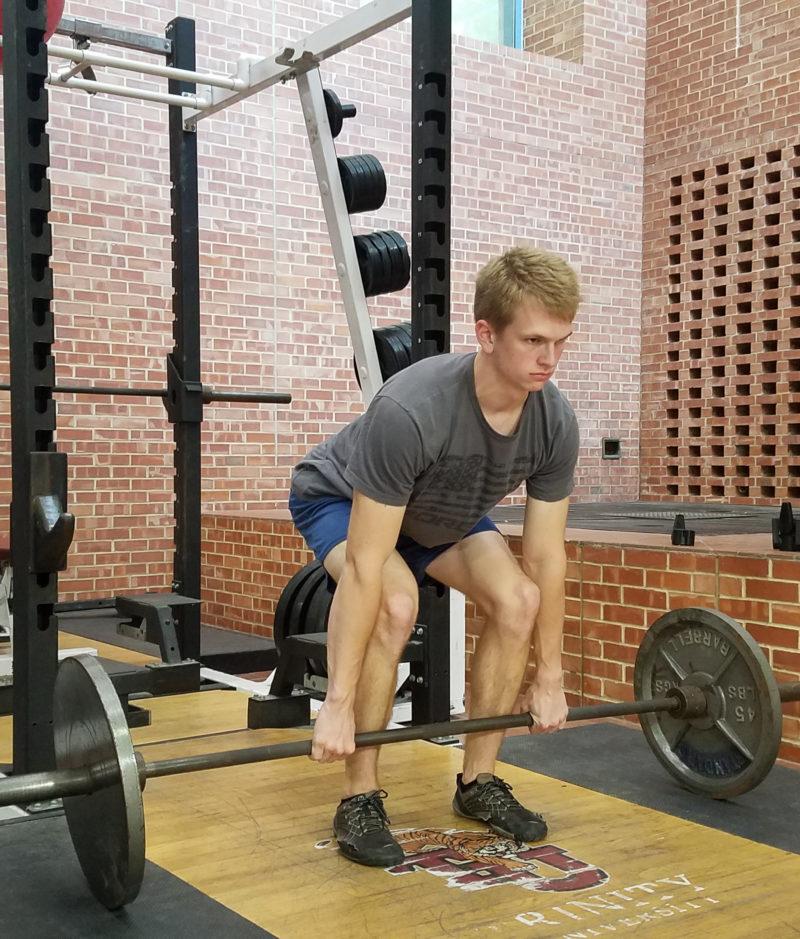I recognize this isn’t the most gripping topic in collegiate life today, but in terms of actual day-to-day impact and the potential for measurable change, college students like ourselves are going to be hard pressed to find a more measurable and beneficial tool for personal improvement than barbell training. Its importance was popularized early on in the 1970s by such greats as Arnold Schwarzenegger, Lou Ferrigno, Franco Columbu and Doug Young. Over my last three years at Trinity, it has been encouraging to see an increase in the number of students who use barbell implements to seek better health. Before the dissolution of the old barbell training room last year, it seemed to me that many more young men and women of all sizes, ages and strengths were becoming more and more comfortable with barbell training alongside each other.
To those who have never attempted to squat with a barbell, this article might seem ridiculous; I assure you it is not. It is never easy for a self-conscious student to attempt a complex multi-joint exercise with a weight far less than the student on the next platform over. Barbell movements can be intimidating, and can deter those unfamiliar with their execution. Not only that, but I have heard several female friends and classmates tell me they feel uncomfortable in the barbell room because they feel that they are being judged or objectified. This must stop.
Regardless of the unfortunate (and often times self-imposed) psychological barriers to barbell training, it should be practiced by everyone at Trinity to some degree or another. If you enjoy the machine room, or swimming, running, yoga, or if you hate exercise altogether, barbells are for you. The Bell Center provides students with barbells for limited hours on weekdays. There are many local gyms that provide barbells, and the local YMCA offers discounted rates for Trinity students. There are also many great barbell programs that are easy to find online, including the 5/3/1 method, the Texas Method, and even the Stronglifts app for smartphones. Those wanting to learn more about these programs can find a tremendous amount of information in such books as “Starting Strength,” “Supple Leopard,” “Get Buffed” and thousands of online articles.
There is a continuum in strength physiology between intensity (the amount of mass on a bar) and stability (the motor unit recruitment required to keep a weight moving in an intended path). Machine implements (like a leg press) offer the trainee the most weight for the least amount of necessary stability. This is because the path of the movement is set in a certain groove by the machine. It is not uncommon to see an adult male who weighs less than 200 pounds leg press over 1,000 pounds. On the other end of the spectrum are dumbbells, which allow travel along the x, y and z axes. Because dumbbells can be moved in all three dimensions, much lighter weights must be used. Essentially, a trainee can lift more weight with a machine than a dumbbell. In short, machines allow for the most weight (albeit usually through a pulley) with the least amount of required stability, and dumbbells offer the most required stability at the cost of heavier weight.
Barbells offer a happy medium. Unlike dumbbells, which can be moved in all three dimensions when held in the hand, a barbell can only travel along two axes (unless the trainee is strong enough to rip the barbell apart). On the other hand barbell movements inherently recruit more muscle mass than dumbbell movements because an athlete can flex against a barbell. The two dimensional nature of a barbell allows for more muscle to be recruited. A weight must be used that is less heavy than a machine, but the required stability of a barbell drastically increases the difficulty of the movement compared to a machine. There are less than 20 adult males who can squat over 1,000 pounds, while there are many who can leg press the same amount.
What does this have to do with a college student who only works out for health and couldn’t care less what the world record raw squat is? It means that barbell movements offer far more bang-for-your-buck than anything else you can do. If you have neck or shoulder pain, strengthening the upper back and spinal erectors will relieve that stress because your body has more support. What about stress headaches? Same thing. If you want to improve your cardio capabilities, strength will allow your cardio sessions to improve because your rate of force production has increased, making your cycling, running or swimming less demanding per stride. If you want to be able to pick up your grandkids one day, try this: squat heavy with a barbell once a week for 10 years, and see how you end up.





